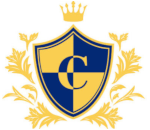The nation’s international reputation is reflected by such indicators as the number of Nobel Prize winners, the proportionally very high research output in academic journals and the global rankings of its institutions of higher education. With nearly all of its rated universities belonging to the world top two hundred according to the Chinese Shanghai, the German CHE and the Dutch CWTS (Leiden) rankings, the Netherlands, as one leading British newspaper conceded, is emerging “as continental Europe’s principal power in higher education.”
Although the Netherlands is firmly embedded in the European structure for higher education, its academic structure is also a reflection of traditions and culture that are the products of a specific national history. One of those particular constants is the desire to reconcile the appeal of egalitarianism with the drive for excellence.
Fundamental Characteristics
The Netherlands was an eager participant in the recent Bologna Process which aimed to homogenize the European higher education area. Although the Netherlands embraced the uniform organization and structure of “Bologna,” it is not difficult to discover the special characteristics of Dutch education under this seemingly homogeneous surface.
The first characteristic
The first striking trait is that higher education – as all other education – is primarily a public responsibility. This is the case in most continental European countries. In the Netherlands it means that the national government by law is responsible for the regulation of the main characteristics, such as governance, structure and quality control, and for funding – currently about eighty percent.
The second characteristic
The first characteristic directly leads to the second characteristic, which is more specific for the Netherlands: the essential equality between all institutions of higher education. In line with traditional egalitarian Dutch ideas, public funding follows the principle of equal distribution. All academic institutions receive similar funding for staff, housing and equipment.
The third characteristic
Consequently, the third characteristic is that the quality of all institutions of higher education is largely comparable, and relatively high. The insignificant differences that remain may be attributed to geographically determined social stratification. The social elite still prefer the traditional, established universities in the urban agglomeration in the north-west and the center of the country over the younger universities in the other regions. Qualitative differences mainly exist in the field of research, mostly resulting from the selective funding by national science foundations (quality criteria) and by private companies and semi-public organizations (contract research).
The fourth and fifth characteristic
The fourth characteristic is the fact that admission into an institution of higher education is based on exit rather than entrance exams. Only a limitednumber of study programs – mainly in the fields of arts and life sciences – adopt additional entrance procedures, largely as a consequence of a government- imposed numerus fixus, a limited number of places made available to first-year students. The main reason for this absence of entrance exams is the strongly selective and profiled structure of secondary education.
Three different school types in secondary education are designed to prepare for a specific form of further education. Preparatory vocational secondary education (VMBO), with a curriculum of four years, leads to senior secondary vocational education and training (MBO) – for at least another year, to fulfill the legal requirement of education until the age of seventeen. VMBO covers slightly over fifty percent of the age cohort. Senior general secondary education of five years (HAVO), which covers approximately twenty-eight percent of the age cohort, prepares for higher professional education (HBO).
The six year curriculum of pre-university education (VWO) prepares students for education at one of the research universities (WO). About eighteen percent of the age cohort enroll in these schools, which are comparable to the older gymnasia. Moreover, students choose from four different “profiles:” sciences, life sciences, economy & society, or arts & society. Each of these profiles may contain subjects required for the admission to matching study programs.
This highly selective structure in secondary education, and especially the differences in duration, content and quality between the HAVO- and theVWO-certificate, is the main reason for a fifth characteristic: the persistence of the binary system in higher education. There is a clear distinction between research-oriented universities on the one hand and institutions of higher professional education on the other. In 2008, about 200,000 students were enrolled in the thirteen research-oriented universities and eight academic medical centers that constitute the sector of tertiary education that is known as WO (Wetenschappelijk Onderwijs, or academic education).
Only these research-based universities offer PhD programs. Another 350,000 students were enrolled in the about fifty technical or vocational institutions that constitute the sector of higher professional education known under the acronym HBO (Hoger Beroeps Onderwijs). Although these institutions of higher professional education have been renamed as “universities of professional education” and are given limited opportunities to develop and carry out applied research projects, the binary system is still firmly in place.
The sixth characteristic
A sixth feature of Dutch higher education, especially of the research universities, is its strong international orientation, both in the curricula andin the international exchange programs. Staff and student exchanges are notonly stimulated by the universities themselves and by the Dutch government, but also very strongly by European programs and by European and global networks in which Dutch universities often play a prominent role, for example in the Coimbra, UNICA and Utrecht networks.
Languages traditionally have had a strong position in Dutch education, with English, French and German compulsory in secondary education. In the last decades the position of French and German has weakened, mainly because English, as elsewhere, has become dominant. In 2005 English was also introduced in the curriculum in the last two years of primary school.
In higher education, an increasing number of courses are offered in English, especially in the master’s programs. Some programs are completely offered in English, as are the curricula of the University Colleges of Utrecht, Maastricht and Middelburg. The influx of foreign students in regular study programs and in summer schools also demonstrates the attractiveness of Dutch education abroad.
Notwithstanding the international orientation of Dutch higher education, only relatively few Dutch students spend part of their studies at a foreign university. The high quality of Dutch higher education itself and – until recently – the favorable job market for graduates may help to explain this rather homebound attitude of the students. But this is also stimulated by the attractive character of Dutch student life. The majority of Dutch students, and particularly university students, leave the parental home and rent rooms in privately owned student-houses or university housing. In university cities the student organizations traditionally dominated a large part of the students’ social life, with clubs, student houses, debating societies, gala parties, formal dinners and yearbooks. Although membership of these traditional student organizations has declined from eighty to about fifteen percent in the past four decades, a great variety of other student organizations have taken their place, including many of the customs and practices of the traditional student organizations.
The seventh characteristic
A seventh characteristic of Dutch higher education may have contributed to this widely developed student life, namely the government-funded systemof grants and loans (studiefinanciering) that are available to all students for the duration of their curriculum.
This grant system is based on the idea that higher education should be available and affordable to all, regardless of background or financial means. All Dutch students under thirty years of age are eligible for a grant that consists of a rather modest basic grant and free public transport. Such a grant is “performance-related,” which means it has to be paid back if a student fails to earn a diploma. Depending on their parents’ income, some students are also eligible for a supplementary grant. In addition to the performance-related grant, students can borrow money to help cover the tuition and additional costs. The maximum monthly support package amounts to slightly more than 900 Euros. Many students opt to take on jobs to supplement this amount for a pleasant student life or to avoid accumulating large loans.
A final factor that continues to shape Dutch higher education is the solid governance and fairly efficient organization of the universities which is largely a legacy of the “external” democratization of higher education that took place after the Second World War. A significant increase in participation of large segments of the population was facilitated by a reorganization of secondary education that was implemented by law in the 1960s. This state supported democratization led to a spectacular enrolment of middle and even lower income groups in universities.
The student revolt, which had started already in the early 1960s, gained new support among the growing student population and young faculty in their call for democratization of university governance. The vehement student protests of 1968/1969 in many Western countries ultimately resulted in the Netherlands in “internal” democratization of universities which introduced institutionalized involvement of both faculty and students. Already in 1969 the government responded to the student protests by proposing a new law (Wet Universitaire Bestuurshervorming, WUB) which was accepted in 1971. It formalized co- management (medezeggenschap) of students, faculty and staff in all levels of university governance.
At the end of the 1980s the demand for participation, which had led to continuing unrest and instability, subsided. University governance finally hasbeen stabilized by a new law on Modernization of University Governance (Wet Modernisering Universitaire Bestuursorganisatie, MUB) in 1997 which provided employees and students with an advisory voice in governance, management, and curriculum, and at the same time allowed for more efficient decision making. Dutch higher education institutions are now governed by an Executive Board (College van Bestuur) – consisting mostly of President, Rector and a third member. The Supervisory Board (Raad van Toezicht) – which appoints and oversees the Executive Board – consists of five persons with professional, corporate, governmental or academic expertise. The OECD, the Organization for Economic Cooperation and Development, the international organization of thirty affluent countries, sees so many advantages in this distinctive Dutch system of governance, which allows for both participation of stakeholders and vigorous decision making, that it suggests that this should be considered by other nations.
Article from "Discovering the Dutch". Click here to get a copy now.



